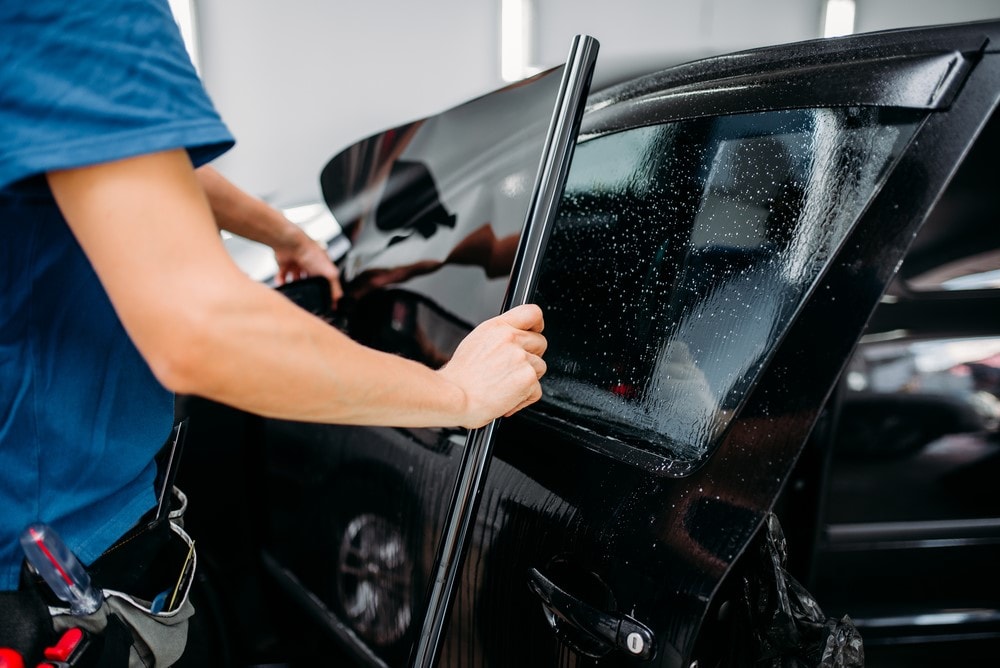Just How Automobile Window Tinting Protects Your Lorry's Interior
Just How Automobile Window Tinting Protects Your Lorry's Interior
Blog Article
Home Window Tinting Rules and Guidelines: What You Required to Know Before Tinting Your Auto
Prior to continuing with home window tinting for your vehicle, it is vital to acquaint yourself with the diverse laws and guidelines that control this technique throughout various states. These laws determine the allowable degrees of color darkness, typically measured by noticeable light transmission (VLT) percentages, and include specific terms for front windscreens intended at guaranteeing road safety. Additionally, specific jurisdictions might use clinical exceptions for people with certifying problems. Recognizing these complexities can conserve you from possible lawful ramifications, but what are the details rules in your state?
Review of Home Window Tinting Laws
Home window tinting laws are regularly based on variant across different jurisdictions, mirroring regional regulations and safety factors to consider. These regulations dictate the permissible degrees of tint darkness and reflectiveness on car windows, ensuring that drivers keep appropriate exposure while additionally shielding versus unsafe UV rays and warm.
Many regulations identify home window tinting based upon the Visible Light Transmission (VLT) percentage, which suggests the quantity of light that can pass through the window. Normally, reduced VLT percentages signify darker tints. Legislations often differentiate in between the front, side, and rear windows, with stricter restrictions put on the front windshield to boost safety for both the driver and other roadway customers.
In addition, some territories enforce restrictions on the reflectivity of the color, stopping extreme glow that might impair presence. Exemptions to these regulations may exist for people with certain medical conditions requiring added sunlight defense. Conformity with window tinting guidelines is essential, as violations can lead to fines, obligatory elimination of the color, and possible rises in insurance policy premiums. As a result, it is essential for car proprietors to acquaint themselves with regional laws prior to waging home window tinting installations.
State-by-State Color Laws
Comprehending the particular window tinting guidelines in each state is crucial for lorry proprietors looking for to comply with the regulation. Each state in the united state has established its own collection of rules controling home window tinting, which can vary considerably. These guidelines frequently determine the allowable levels of tint darkness, the sorts of home windows that can be tinted, and any kind of medical exemptions that might use.
As an example, states like The golden state have stringent restrictions on tint darkness for front home windows, while others, such as New Mexico, may allow darker colors. Furthermore, specific states mandate details visibility portions for different windows, including the windshield, front side windows, and rear windows. It is critical for car owners to familiarize themselves with their state's legislations to prevent prospective fines or penalties.
Furthermore, some states might need a qualification sticker to be positioned on tinted home windows, showing conformity with state laws. Failure to abide by these regulations not only runs the risk of legal repercussions yet can additionally impact safety and presence while driving. Vehicle proprietors must perform comprehensive research study or speak with local authorities to guarantee full understanding and conformity with state-by-state color guidelines.
Allowed Tint Levels and Kinds
Lots of automobile proprietors might be surprised to learn that allowed tint levels and kinds vary widely across different states. Each state has developed its own regulations pertaining to the permitted darkness and reflectivity of home window tint, usually measured by Visible Light Transmission (VLT) percents. VLT describes the quantity of light that can travel through the colored home windows; hence, a reduced percentage suggests a darker tint.

Additionally, the kinds of color products permitted can differ, with some states forbiding metal or mirror-like surfaces. It is essential for lorry proprietors to familiarize themselves with their state's details legislations to ensure compliance. Non-compliance can cause see this here fines, required elimination of the tint, or other lawful effects, making it imperative to comprehend these guidelines prior to waging setup.
Medical Exemptions for Tinting
While not all states give allocations for clinical exceptions pertaining to home window tinting, those that do identify the necessity for details people to boost presence and convenience due to clinical conditions. Various clinical conditions, such as lupus, skin cancer, and particular eye problems, can render individuals particularly conscious sunlight. These individuals might require darker colors to protect themselves from unsafe UV rays and glare.

It is important to note that despite a clinical exception, there may still be restrictions on the level of color permitted. Compliance with state laws makes sure that people are both secured and within legal limits. Those thinking about medical exceptions need to call their local Division of Motor Automobiles or comparable authority to understand the demands and treatments needed to look for an exemption successfully.
Charges for Non-Compliance
Stopping working to abide with window tinting regulations can cause substantial fines, which differ by state. Law enforcement agencies are empowered to release citations for cars that do not stick to the specified tinting laws. These fines commonly include penalties, which can vary from small quantities to several hundred bucks, depending upon the intensity of the offense and the state in inquiry.
In some territories, repeated offenses may cause escalating fines or click here for info extra penalties, such as obligatory court appearances. Furthermore, non-compliance might require the elimination of illegal tinting, usually at the owner's expense. In severe instances, habitual wrongdoers might encounter suspension of their vehicle registration up until conformity is attained.
In addition, insurance policy effects may arise from getting several citations for window tint offenses. Insurance firms may see such offenses as an indicator of riskier behavior, potentially bring about enhanced premiums or trouble in protection.
To stay clear of these charges, it is essential for vehicle proprietors to familiarize themselves with their neighborhood window tinting regulations and make certain that their vehicle complies (Window Tinting). This aggressive approach not only avoids legal implications however also advertises roadway safety
Final Thought

Most laws classify home window tinting based on the Visible Light Transmission (VLT) portion, which shows the amount of light that can pass through the window. Compliance with window tinting laws is crucial, as infractions can result in fines, required elimination of the tint, and possible increases in insurance coverage premiums.Understanding the specific home window tinting policies in each state is essential for vehicle owners seeking to conform with the legislation. These regulations usually determine the allowed levels of tint darkness, the kinds of home windows that can be tinted, and any type of clinical exceptions that might apply.
For instance, states like The golden state have stringent restrictions on tint darkness for front home windows, while others, such as New Mexico, might allow darker colors.
Report this page